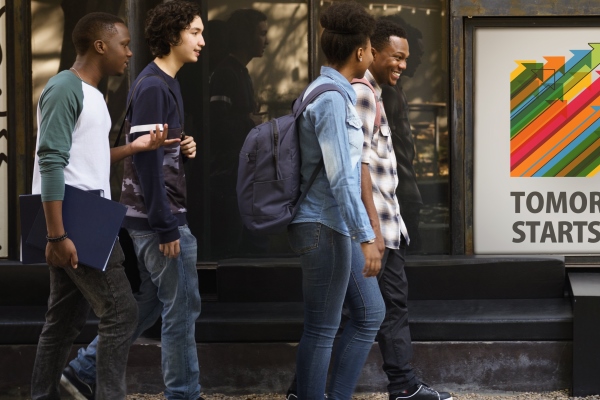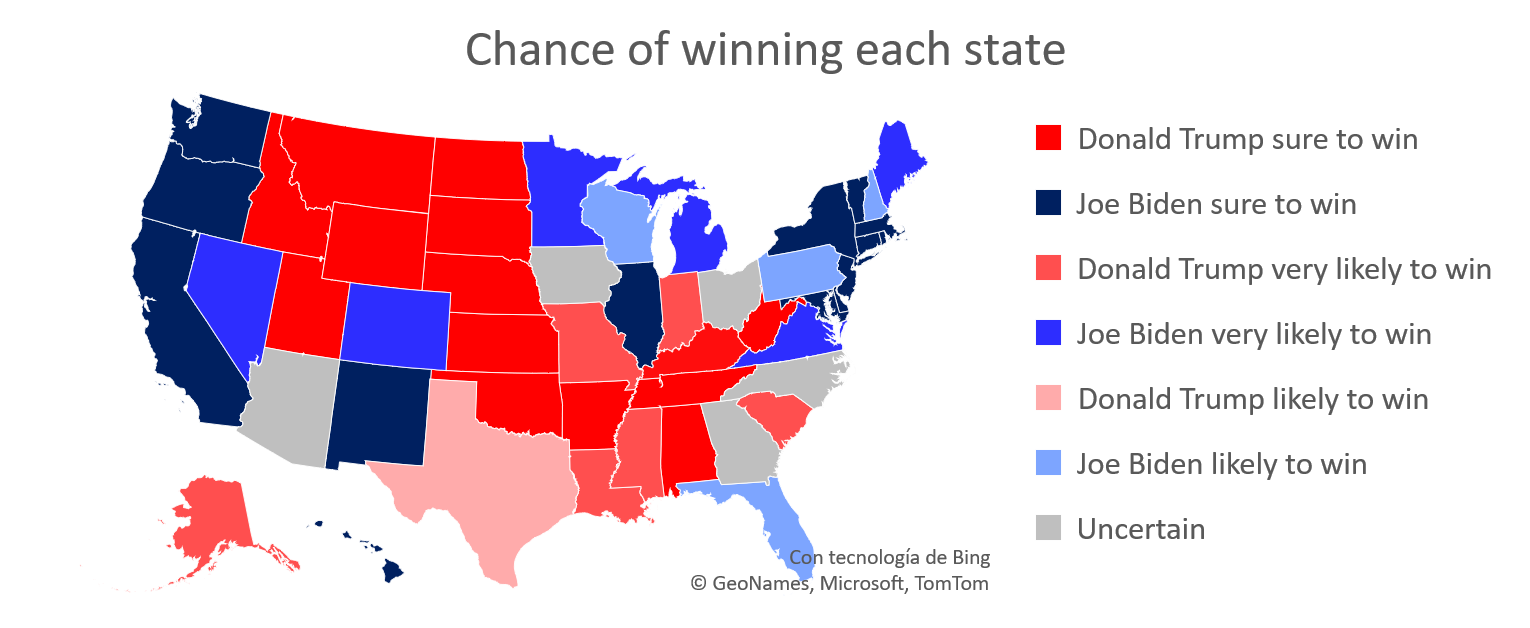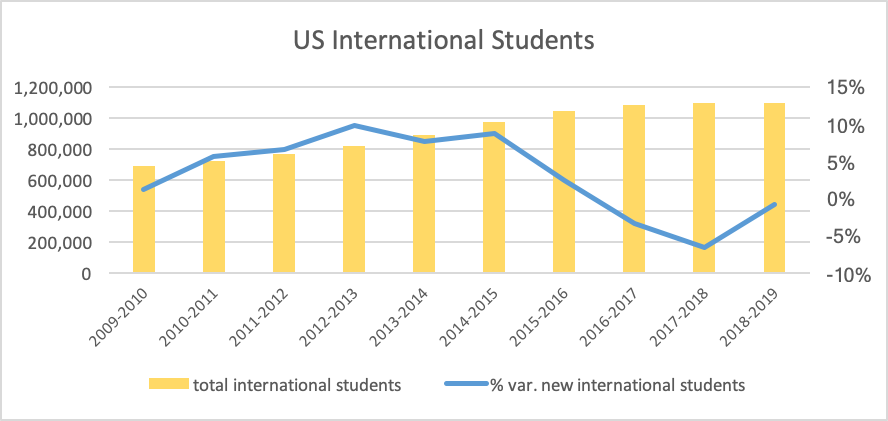The Beginning of (a) Fall: on Trump Administration's Failed Move against International Students
July 27, 2020
About the authors:
Mr. Marco Carrasco-Villanueva: an economist specialized in Asia-Pacific Economies (mainly in China) and Behavioral Economics. He graduated from the National University of San Marcos (Peru) and holds a Master’s degree in Economics & Psychology from the University of Paris 1 - Sorbonne (France). He was an active member of the Grupo ASIA organization in Peru and took courses as a Young Sinologist at the Academy of Social Sciences in Shanghai (China). He has given several lectures on his research topics both in Asia and Latin America. He currently resides in Cambridge, Massachusetts, following postgraduate studies in International Development at Harvard University (the United States).
Mr. Gerardo Gómez-Ari: a graduate in Public Economics, National University of San Marcos. A consultant and research assistant in development economics, health economics, impact evaluation, and database analysis. PRONABEC-Peru Fellow 2017.
The following is the orignal article written by Mr. Marco Carrasco-Villanueva and Mr. Gerardo Gómez-Ari.
The Student and Exchange Visitor Program (SEVP) is a program that the Department of Homeland Security (DHS) administers forthe Student and Exchange Visitor Information System (SEVIS). SEVP ensures that government agencies have essential data related to non-immigrant students and exchange visitors to preserve U.S. national security. SEVP is part of the National Security Investigation Division and acts as a bridge for government organizations that have an interest in information on non-immigrants.
SEVP announcement
On July 6, SEVP announced modifications to exemptions for non-immigrant students taking online classes for the fall 2020 semester. The most important points of the announcement were:
-
Non-immigrant F-1 and M-1 students attending entirely online programs were told to leave the country or transfer themselves to an institution with in-person instruction. If not, they could face immigration consequences including, but not limited to, the initiation of removal proceedings.
-
-
Non-immigrant F-1 students attending hybrid programs–a mixture of online and in-person classes–would be allowed to take more than one class or three credit hours online. The above exemptions did not apply to F-1 students in English language training programs or M-1 students pursuing vocational degrees, who would not be permitted to enroll in any online courses.
-
-
Non-immigrant students within the United States were not permitted to take a full course of study through online classes. If students find themselves in this situation, they will be told to leave the country or take alternative steps to maintain their non-immigrant status, such as a reduced course load or appropriate medical leave.
Initial implications
Harvard University and Massachusetts Institute of Technology's response was immediate. Both prestigious institutions listed the most important problems they found related to the controversial measure:
-
First, the measure did not consider that university classes went from face-to-face to virtual to avoid the risk of contagion.
-
-
Second, the measure could have affected and frustrated international students since there were no conditions to ensure safe transportation to their home countries or adequate infrastructure there to continue their studies through the virtual modality.
-
-
Finally, the controversial measure would have not complied with the Administrative Procedures Act. Not being a reasonable basis to justify the measure, and no mechanisms to ensure the people the opportunity to comment on it.
Other universities, such as Stanford University and the University of South Carolina, supported the lawsuit filed by Harvard and MIT. Some educational institutions, such as the University of California, also filed their own lawsuits against the federal government.
Mr. Trump
Trump's response to the lawsuits was immediate. Through Twitter, the President of the United States criticized online education and threatened that schools would not receive funds from the federal government if they did not open in the fall.
Source: Twitter
Measures defended by Trump government could have meant desperation to show an apparent victory over COVID-19 ahead of the next elections, where the Republican Party is no longer the favorite in the polls. According to The Economist forecasts, Joe Biden is very likely to beat Donald Trump in the electoral college, as Donald Trump has only a 10% chance of winning the electoral college and a 2% chance of winning the most votes.
Source: Own elaboration based on The Economist
Trade-off
Measures initially proposed could have an economic and cultural cost. They could even affect the economic growth of the United States through limitations in the development of science and technology.
Source: Own elaboration based on the Institute of International Education; NAFSA: Association of International Educators
For instance, according to the Institute of International Education, there are currently more than a million international students in the United States. International students from China and India representing more than 50% of the total. According to the NAFSA, there are also more than 450 thousand jobs available thanks to the demand that international students represent.
Source: Own elaboration based on NAFSA: Association of International Educators
With fewer American students leaving their country for education, the educational sector represents a surplus for the American economy. International students not only pay double or triple at American public universities, but also spend on accommodation, dining, retail, and insurances. So, the lower the number of international students entering and staying, the lower the economic benefit of the sector and the lower the income for public universities. According to the National Science Foundation, in 2017, foreign-born individuals accounted for 30% of workers (with a bachelor's or higher-level degree) in science and engineering.
These measures could also have had dire consequences on the international students’ health. Trump showed his request to reopen study venues such as colleges and universities. However, there are no guarantees that strict adherence to hand-washing, the usage of masks, and capacity limits in public spaces will be fully observed in these institutions. According to a recent article from the Yale School of Public Health, there are serious problems in organizing a safe reopening. Frequent screening, continuous attention to basic prevention, and behavioral interventions are important to control the spread of COVID-19. False positives also represent a challenge, even with constant screening.
Rescinding
After several days of uncertainty, finally, on July 14, the Department of Homeland Security and U.S. Immigration and Customs Enforcement agreed to back down on its ban for international students taking online-only courses. Initial changes to immigration processes and procedures set up in March because of the coronavirus pandemic are now in force again, allowing international students to continue their studies.
Harvard University President, Lawrence S. Bacow, interpreted the decision as a significant victory. However, he hinted that proposals such as those of the government could continue, and against which he claimed to have strong legal arguments ready to be used to protect their international students.
Trump's impulsiveness remains visible via Twitter. The President of the United States has shown himself once again taking anti-globalization postures without analyzing the consequences. California, New York, Massachusetts, Texas, and Pennsylvania are the top five states that receive the most economic benefits from international students. In three of these five states, Joe Biden has a very high probability of winning. Of the remaining two, Donald Trump could probably win in Texas and Joe Biden could probably win in Pennsylvania. So, it seems that Trump may not care about affecting states where he does not have too many chances to win.
Although the reaction was swift to stop the foolish measures, the uncertainty it leaves for potential international students may make the United States less attractive. It is necessary to highlight that, during the Trump administration, the yearly variation in new international students has mostly been negative. Canada and Australia, as well as Europe, could start to be perceived as valid alternatives to the unstable scenario represented by the Trump administration. In addition to this slip, Chinese and Indian students, who together represent more than half of international students in the United States, could consider more in the future of the still difficult trade and diplomatic relationships, as well as the unfair confrontations that may increase any discriminatory behavior against them.
During the last two decades, China and other Asian countries have been developing in STEM areas. While the United States continues to lead academic and scientific production, China has been taking more and more space from it. So, in line with the trend of increasing joint publications by Chinese and American researchers, affecting the arrival of international students could affect the STEM capabilities of the United States. Trump's next move about international students is still unpredictable. However, the strong response from many universities and colleges, as well as other stakeholders, should have left Trump a clear lesson, at least for now. Recurrence is not an option, it may really backfire and, as current political forecasts suggest, the “beginning of (a) fall” this year might not just represent a seasonal change after all.
(Please note: the above contents only represent the views of the author, and do not represent the views or positions of the Taihe Institute.)
References:
[1]CNN. (July 07, 2020). Es posible que los estudiantes internacionales tengan que irse de EE.UU. si sus universidades deciden dictar solo clases en línea. Retrieved from https://cnnespanol.cnn.com/2020/07/07/es-posible-que-los-estudiantes-internacionales-tengan-que-irse-de-ee-uu-si-sus-universidades-deciden-dictar-solo-clases-en-linea/
[2]CNN. (July 08, 2020). Harvard y el MIT demandan a la administración de Trump por medida que no permite que los estudiantes extranjeros solo tomen cursos en línea. Retrieved from https://cnnespanol.cnn.com/2020/07/08/harvard-y-el-mit-demandan-a-la-administracion-trump-por-medida-que-no-permite-que-los-estudiantes-extranjeros-solo-tomen-cursos-en-linea/?fbclid=IwAR2c82012g_3RtriFMZcp6_J20RjDAi3tRX2-UgiFpDvOWUB9SB2yZ-ubg4
[3]Donald Trump [@realDonaldTrump]. (July 10, 2020). Now we have witnessed it on large scale basis, and firsthand, On Campus, Learning. Not even close! [Tweet]. Retrieved from https://twitter.com/realDonaldTrump/status/1281554061972692994
[4]Forbes. (July 06, 2020). Estudiantes extranjeros en EE.UU. deberán salir del país si sus clases son virtuales. Retrieved from https://forbes.co/2020/07/06/actualidad/estudiantes-extranjeros-en-ee-uu-deberan-salir-del-pais-si-sus-clases-son-virtuales/
[5]Forbes. (July 08, 2020). ICE issues needless new restrictions for international students. Retrieved from https://www.forbes.com/sites/prestoncooper2/2020/07/08/ice-issues-needless-new-restrictions-for-international-students/#1f3b58f91b35
[6]Holland & Knight. (July 13, 2020). United States: Immigration under COVID-19: ICE restricts foreign national students from taking online courses. Retrieved from https://www.mondaq.com/Article/964796
[7]Homeland Security. (2020). Getting started with SEVP certification. Retrieved from https://studyinthestates.dhs.gov/schools/apply/getting-started-with-sevp-certification#:~:text=SEVP%20certification%20allows%20institutions%20to,to%20enter%20the%20United%20States.
[8]Institute of International Education. (2019). Economic Impact of International Students. Retrieved from https://www.iie.org/Research-and-Insights/Open-Doors/Data/Economic-Impact-of-International-Students
[9]Institute of International Education. (2019). Open Doors Data. Retrieved from https://www.iie.org/Research-and-Insights/Open-Doors/Data
[10]Liberal Currents. (May 21, 2020). Fearing ourselves: dignity and disgust in a pandemic. Retrieved from: https://www.liberalcurrents.com/fearing-ourselves-dignity-and-disgust-in-a-pandemic/
[11]NAFSA: Association of International Educators. (2020). NAFSA International student economic value tool. Retrieved from https://www.nafsa.org/policy-and-advocacy/policy-resources/nafsa-international-student-economic-value-tool-v2#main-content
[12]NAFSA: Association of International Educators. (2020). The United States of America benefits from international students. Retrieved from https://www.nafsa.org/sites/default/files/media/document/isev-2019.pdf
[13]National Science Board. (2020). The state of U.S. Science & Engineering. Retrieved from https://ncses.nsf.gov/pubs/nsb20201
[14]National Science Foundation. (2019). Immigration and the S&E Workforce. Retrieved from https://ncses.nsf.gov/pubs/nsb20198/immigration-and-the-s-e-workforce
[15]NPR. (July 06, 2020). ICE: Foreign students must leave the US if their colleges go online-only this fall. Retrieved from https://www.npr.org/sections/coronavirus-live-updates/2020/07/06/888026874/ice-foreign-students-must-leave-the-u-s-if-their-colleges-go-online-only-this-fa
[16]Paltiel, D., Zheng A. y Walensky R. (July 06, 2020). COVID-19 screening strategies that permit the safe reopening of college campuses. Retrieved from https://www.medrxiv.org/content/10.1101/2020.07.06.20147702v1
[17]The Chronicle of Higher Education. (July 14, 2020). Here is a List of Colleges’ Plans for Reopening in the Fall. Retrieved from https://www.chronicle.com/article/Here-s-a-List-of-Colleges-/248626
[18]The Economic Times. (July 11, 2020). Explained: Why US cannot say no to international students. Retrieved from https://economictimes.indiatimes.com/nri/visa-and-immigration/explained-why-us-cannot-say-no-to-international-students/articleshow/76905942.cms
[19]The Economist. (2020). Forecasting the US elections. Retrieved from https://projects.economist.com/us-2020-forecast/president
[20]The New York Times. (January 03, 2020). One of America’s most vital exports, education, never goes abroad, but it still faces threats. Retrieved from https://www.nytimes.com/2019/01/03/magazine/one-of-americas-most-vital-exports-education-never-goes-abroad-but-it-still-faces-threats.html
[21]The President and Fellows of Harvard College. (2020). Student and Exchange Visitor Program (SEVP) Lawsuit. Retrieved from https://www.harvard.edu/sevp
[22]The Verge. (July 13, 2020). Seventeen states sue Trump administration over new student visa guidelines. Retrieved from https://www.theverge.com/2020/7/13/21322780/ice-lawsuit-states-universities-international-students-visa-pandemic-trump
[23]US Immigration and Customs Enforcement. (March 09, 2020). Broadcast Message: coronavirus disease 2019 (COVID-19) and potential procedural adaptions for F and M non-immigrant students. Retrieved from https://www.ice.gov/doclib/sevis/pdf/bcm2003-01.pdf
[24]US Immigration and Customs Enforcement (July 06, 2020). SEVP modifies temporary exemptions for non-immigrant students taking online courses during the fall 2020 semester. Retrieved from https://www.ice.gov/news/releases/sevp-modifies-temporary-exemptions-nonimmigrant-students-taking-online-courses-during
[25]US Immigration and Customs Enforcement. (2020). Student and Exchange Visitor Program. Retrieved from https://www.ice.gov/sevis
—————————————————————
ON TIMES WE FOCUS.
Should you have any questions, please contact us at public@taiheglobal.org




